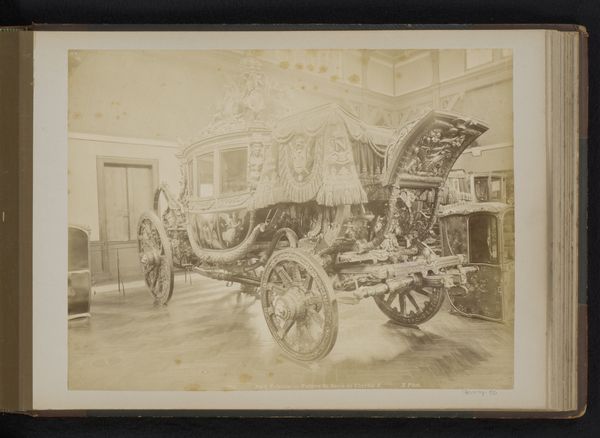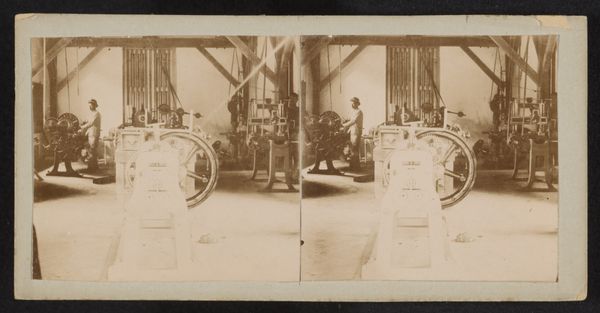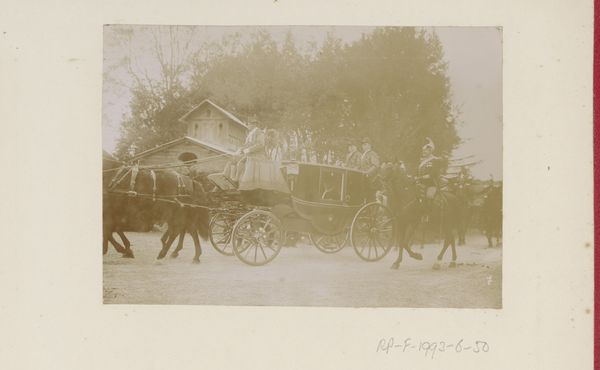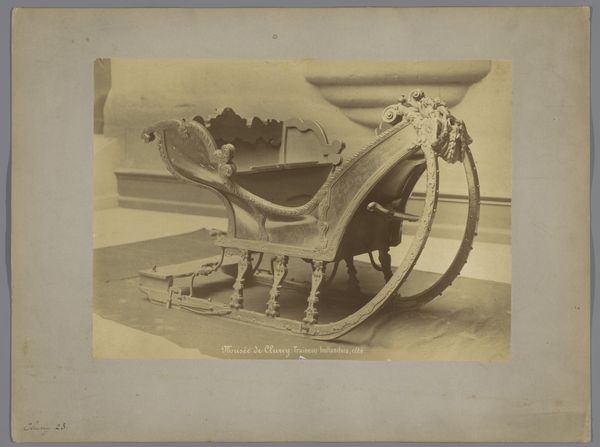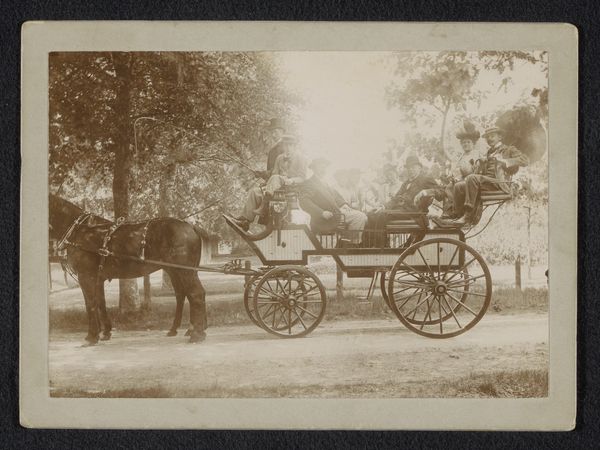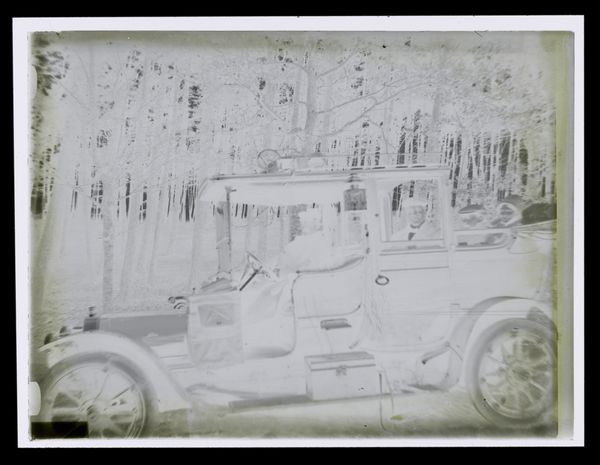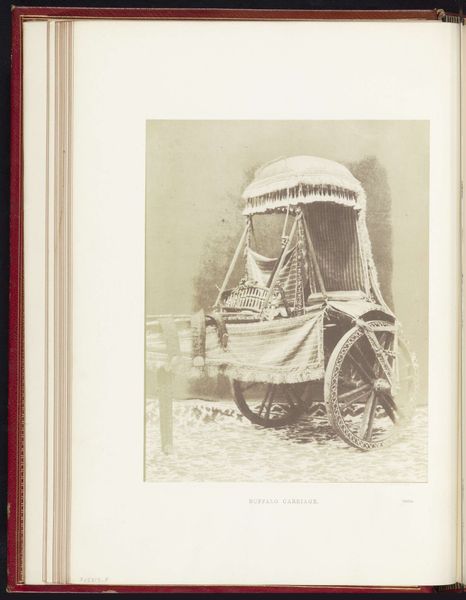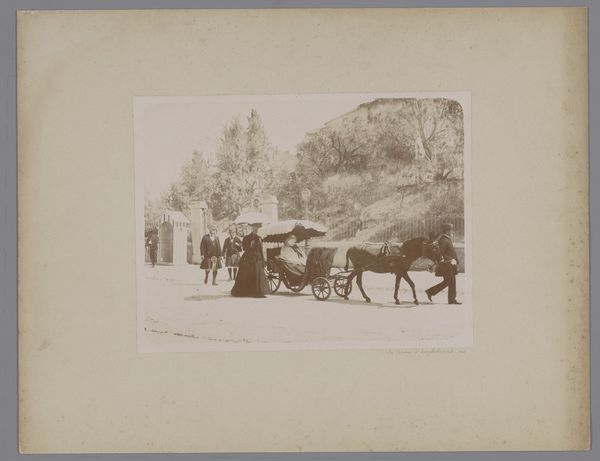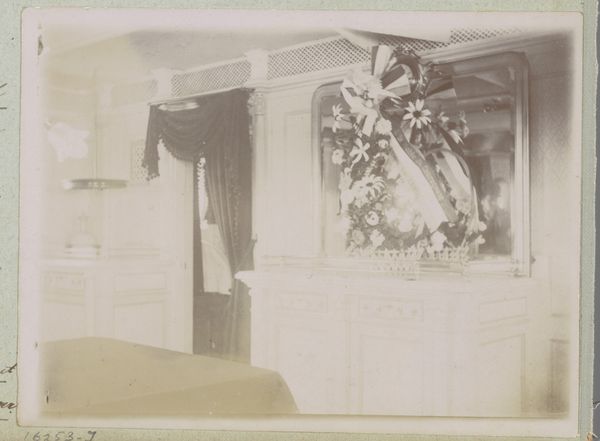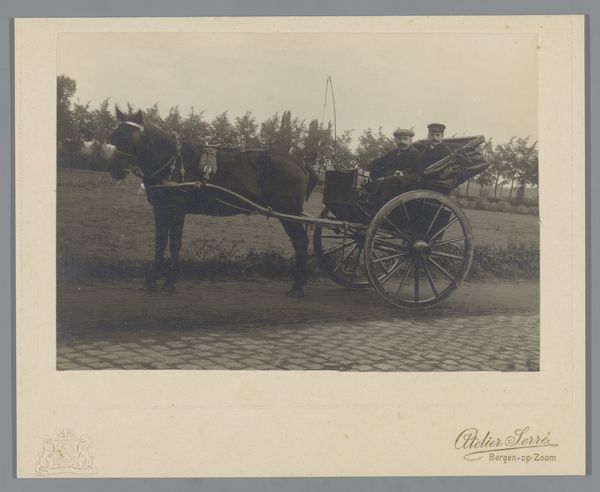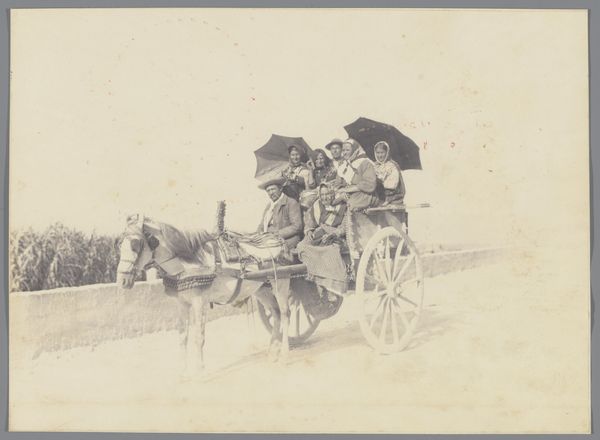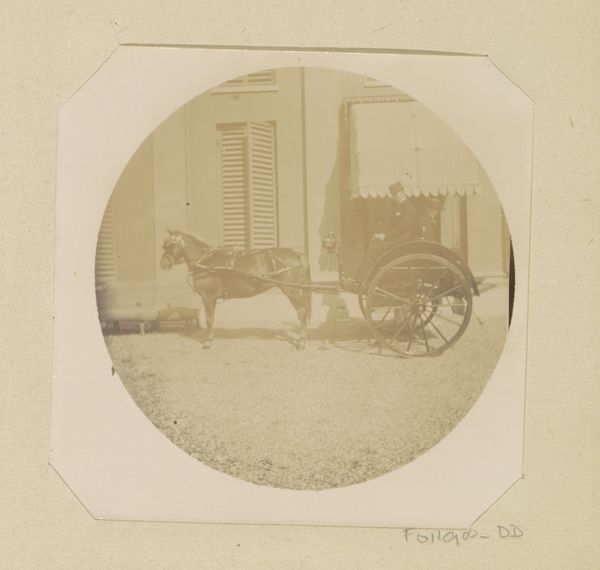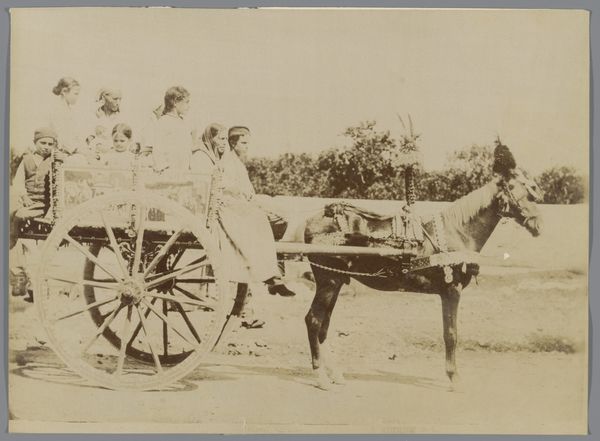
photography
#
photography
#
genre-painting
#
watercolor
Dimensions: height 259 mm, width 346 mm
Copyright: Rijks Museum: Open Domain
Curator: Welcome! We’re looking at a photograph titled "Koets in het Musée de Cluny te Parijs," or Carriage in the Cluny Museum, Paris, dating from sometime between 1850 and 1900. The photograph is by Médéric Mieusement, now housed in the Rijksmuseum collection. Editor: My first thought is: what an incredible survivor. Look at all that detail, all the labor and materials crystallized in this image. It's remarkably intact. Curator: Indeed. The carriage itself evokes a kind of romanticism, the height of opulence. One imagines figures from fairytales stepping out of it, rather than everyday people. The ornate carvings almost appear to mimic plant forms – twisting vines, perhaps, signifying fertility and abundance? Editor: I am immediately drawn to the process by which this was crafted. I imagine woodworkers meticulously carving each flourish, metalworkers forging intricate details, all reliant on specific sources and trade routes. We see not just luxury, but also a chain of labor and resources. It forces a consideration of what costs are obscured. Curator: An interesting perspective, grounding the symbolic in the material reality. What meanings do you believe emerge from observing the intersections between them? Editor: It speaks volumes about power structures. This photograph presents us with the finished spectacle, and it is easy to fixate on surface aesthetic alone. What really resonates with me, however, are questions of access and exploitation: the imbalance implicit when such intensive, specialized crafting produces an item exclusively for a privileged few. Curator: A stark reminder that beauty and craftsmanship are often built on unseen foundations. To appreciate the artistry here requires us to contemplate both the tangible skills, as you say, and also the cultural and ethical dimensions woven into this captured moment of time. Editor: Absolutely. To me, that’s the crucial intersection. Seeing an artwork not as an isolated artifact, but a confluence of materials, skills, historical context, and social relationships. Curator: I will carry forward these thoughts as I observe it, letting the carriage be a symbolic portal into deeper dialogues, too. Thank you. Editor: And thank you; you've provided another fascinating lens to approach and understand this object.
Comments
No comments
Be the first to comment and join the conversation on the ultimate creative platform.
